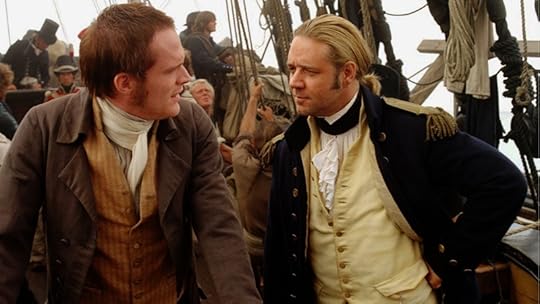How to Identify Your Story’s Premise–and Its Most Important Part
 A high-concept premise can make or break your book—but not in the way you might think. It’s not enough just to come up with a cool idea for your book. You also have to make it work on every single page. Otherwise, no matter how cool it is, it quickly becomes the wrong premise. The key to solving this problem before it even gets started is learning how to identify your story’s premise—and more specifically the most important aspect of that premise—right out of the gates.
A high-concept premise can make or break your book—but not in the way you might think. It’s not enough just to come up with a cool idea for your book. You also have to make it work on every single page. Otherwise, no matter how cool it is, it quickly becomes the wrong premise. The key to solving this problem before it even gets started is learning how to identify your story’s premise—and more specifically the most important aspect of that premise—right out of the gates.
Take a look at your premise. Do you know what it is? Is it present right from the first page?
Good. That’s half the battle.
But what about the rest of the book? Is your premise driving your plot on every page? Does it matter on every page? Or did it introduce itself in a flash of look-at-me coolness, only to realize a few chapters in, it really had nothing to do, and now it stands around twiddling while the characters pursue their adventures elsewhere?
If so, the story is not only missing out on the better half of its possibilities, it also risks betraying readers’ trust. If they picked up the book because the premise sounded cool—only to discover the premise was never suitably developed—they’re likely to be disappointed.
What Happens When You Choose the Wrong Premise?
Your story’s premise is its central idea. This is the concept that created the unique situation upon which your conflict is founded. Consider the following:
A genius child is tricked into massacring an alien army, thinking he’s playing only a game. ( Ender’s Game )

A naval officer and a surgeon-cum-spy pursue friendship and adventure during the Napoleonic wars. ( Master and Commander )

Two teenage cancer patients fall in love and seek the meaning of life by pursuing their favorite author. ( The Fault in Our Stars )

For the sake of example, let’s say we just read a book with the following premise:
An outcast girl in post-apocalyptic Siberia discovers local wolves manifesting strange abilities—sometimes grotesque, sometimes miraculous.
Now, I just made that up off the top of my head, but I actually think it sounds pretty cool. If I read the blurb on Amazon, I’d take a second look. But if in reading that book, I discovered the mysterious mutant wolves only made random appearances throughout the plot and didn’t actually matter to the outcome of the climax, I’d be pretty disappointed.
The problem might not be that the book is a bad read. The problem is that the author chose the wrong premise.
Best case scenario is that the “accidental” premise that surfaced in the main conflict isn’t a bad read in its own right even though it has a scattered focus since it started out trying to be something it’s not.
Worst case scenario is that the “accidental” premise is watered-down and boring because it took so much attention away from what could have and should have been the best part of the book.
Not exactly what you’re hoping for in your story? Me neither.
How to Identify Your Story’s Premise—the Right One
Ask yourself the following two questions to make sure your story has a cohesive premise—and that it’s the right premise.
1. What Idea Inspired This Story?
Usually, although certainly not always, the idea that first sparked your imagination’s curiosity is going to be your primary premise. For example, all my stories have started with the same simple concepts that carried them through to completion:
A disgraced knight falls in love with a fellow captive during the Third Crusade. ( Behold the Dawn )
A man learns he has the ability to cross into a parallel fantasy world known to most people only through dreams. ( Dreamlander )
A woman who lives in the sky falls onto a barnstorming pilot’s biplane. ( Storming )
A poor boy in Georgian England is endowed with superpowers. ( Wayfarer )
Consider your own first spark of inspiration. Is that original idea still present in your existing story? Is it still prominent in your story? Is it still powering your story?
If so, cool beans.
If not, you might want to consider what is the controlling idea.
2. What Idea Is Powering the Conflict?
Doesn’t matter what cool idea you initially came up with. Your story’s true premise will always be at the heart of the main conflict—the plot. What does your character want? What’s getting in his way? How is he overcoming the conflict to eventually reach his story goal? What’s at stake if he does or doesn’t reach it?
Usually, you won’t be able to sum up these ideas in the same words as you would your initial idea (above), but even if they’re not exactly the same, the one must grow out of the other.
To return to our original example of the outcast girl and the mutant wolves, if her main conflict ended up being about learning how to be a nun in a convent, with only a few glimpses of the wolves out her window, then the original premise and the actual plot do not align—and the story doesn’t work.
What’s powering your main conflict? Is it your original premise idea?
If so, cool beans!
If not, how has your story evolved away from the original idea? Can you reincorporate it into the main conflict? Or do you need to scrap the original premise altogether so you can strengthen the emergent one?
A solid narrative begins and ends with a cohesive focus on your story’s premise. To find that focus, you first have to learn how to identify your story’s premise. Use these two questions to refine your understanding of your story and come up with a high-concept premise that wows readers all the way through to the end.
Wordplayers, tell me your opinion! How did you figure out how to identify your story’s premise? What is it? Tell me in the comments!
The post How to Identify Your Story’s Premise–and Its Most Important Part appeared first on Helping Writers Become Authors.
 newest »
newest »
 Glad you enjoyed, Jannette! Happy writing. :)
Glad you enjoyed, Jannette! Happy writing. :)




